How to Salvage, Hydrate, and Design with Hellebore
Flowers are expensive. And hellebore are no exception. They can also be prone to wilting, so it’s tough to take the risk on these divas when you are trying to order efficiently and run a profitable business. One of the ways to mitigate the risk is to be mindful of a few key ordering tips and know how to handle them well (including reviving them). Great care for your stems can make a big difference in their performance and your bottom line. As a result, I’m fairly passionate about care and handling!
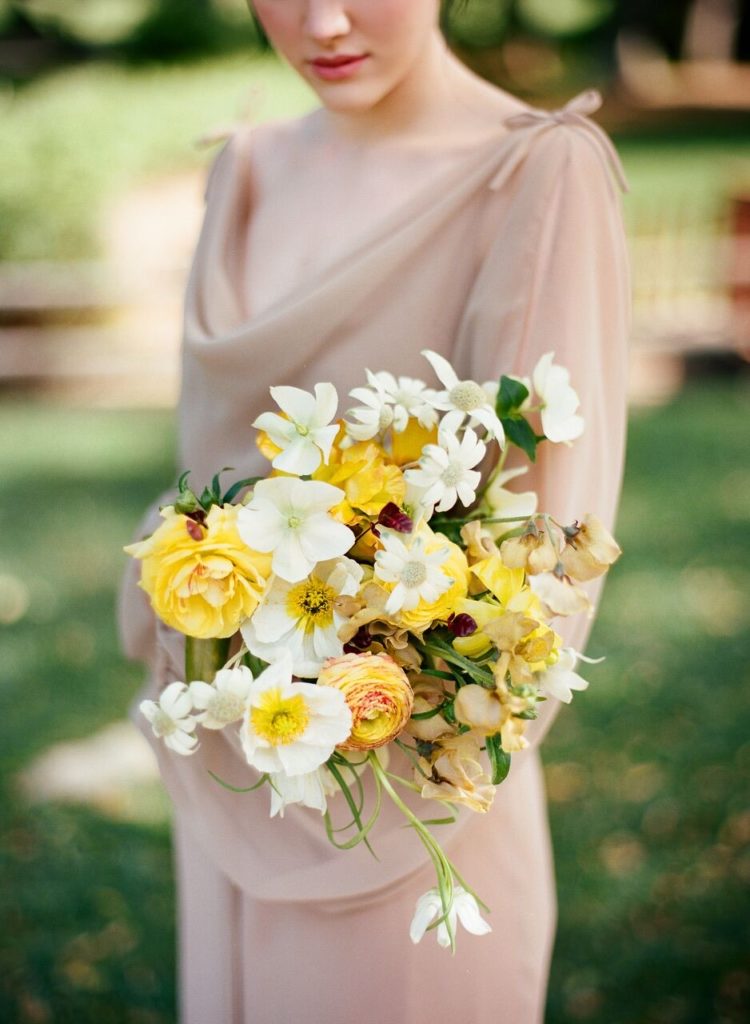
Hellebore are one of the earliest perennials in the garden. They will survive in late season snow and frosty conditions and are also known as “Lenten Rose,” since they bloom as early as Lent! Not only do they bloom early, they also last quite a while in the garden which makes them a great addition to your garden, yard, or container! As they go through phases of blooming, reproduction, and seeding, they become more hardy, so cutting them after they have been on the plant for some time tends to bear tougher blooms.
This flower not only delivers us a long season (we’re talking mid-to-late winter to the end of spring), it also is one of the most beautiful flowers for spring designs. With colors ranging from antique green, crisp white, plum, dark red, pink, and mauve, it’s truly a miraculous little plant.
Hellebore really only have one problem: once cut, they can turn droopy and unusable. But if you know how to select and condition your hellebore well, you’ll find they can be a reliable addition to so many types of designs.
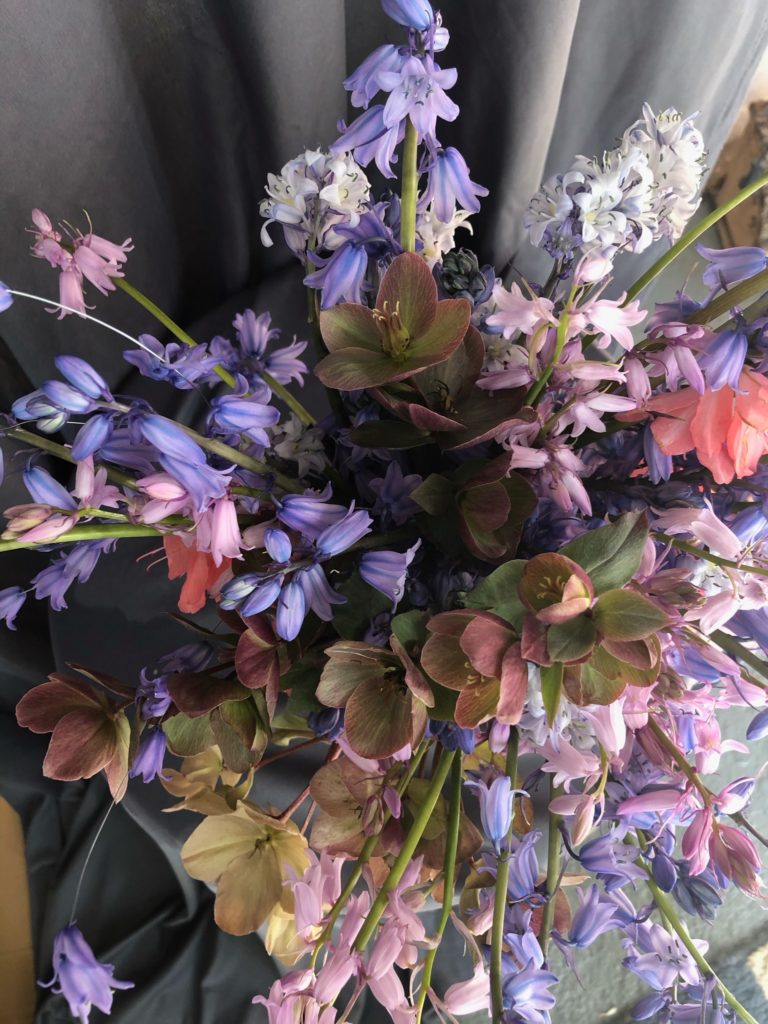
Conditioning Hellebore
If you have hellebore in your garden, lucky you! Start by hydrating the plant itself 48 hours before cutting. Water the plant or cut it after a rain spell. This will get your plants started off right. Always try to harvest in the morning when it’s coolest.
When selecting your hellebore blooms, whether in the garden or at the wholesaler, seek out blooms that are turgid (fully hydrated) and do not show browning or fungal spots. Try to choose stems from plants where the foliage is a rich dark green and avoid yellowing foliage as there may be a fungal issue present.
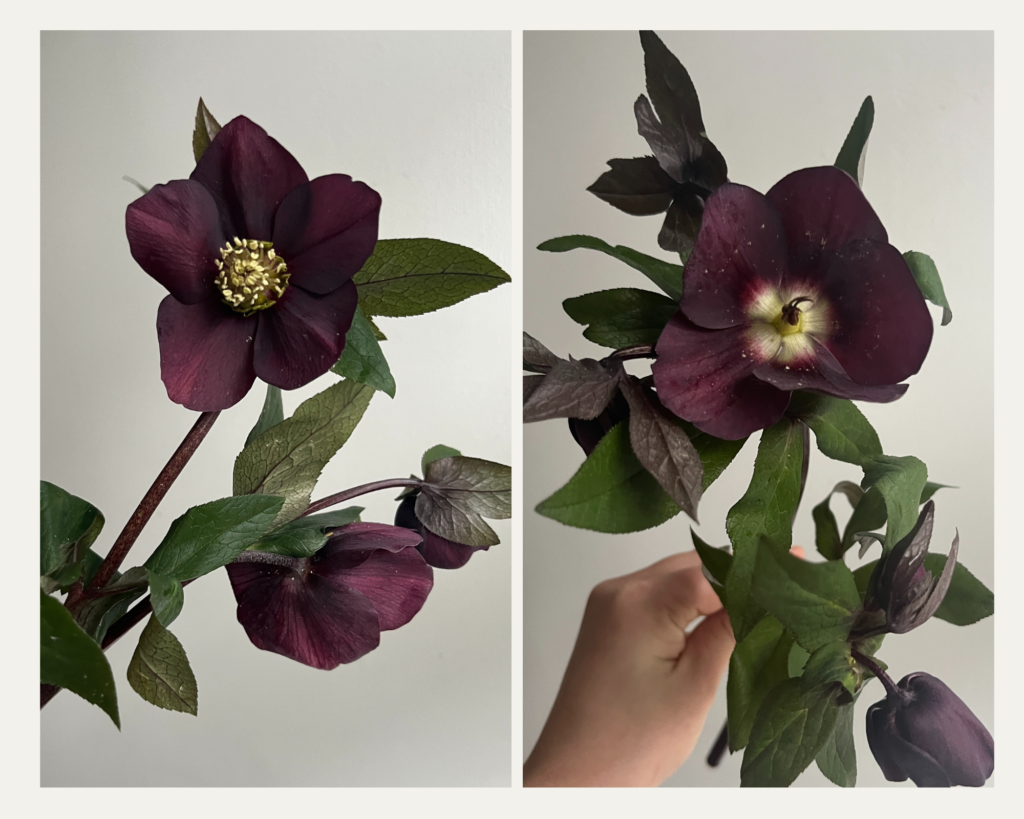
When selecting hellebore, either by buying or cutting it, try to choose blooms that have no yellow pollen. Notice in the photo on the left (above) the pollen is still present. The hellebore to the right has dropped its pollen and you can see the beginning of a seed pod. The hellebore to the right will perform better than the one on the left.
Ultimately, you might not have the option to choose pollen-less so you go with what’s available. Don’t fret, if your hellebore still has pollen, they can still hold up! Granted – I would be cautious and over-order by 5-10% as you may lose stems you are counting on. If the stems do fail, you can typically clip the heads off and glue them into corsages or head crowns if needed.
Note: White “Winter Bell” hellebore is a very reliant workhorse of a bloom and rarely wilts. Alternatively, the double-headed and frilly hellebore are a bit higher risk. They can be fussy, wilty, and floppy, so if performance is a concern, also choose wisely when it comes to variety!
Upon harvest or receipt, it’s important to hydrate your stems immediately. Prepare a clean vase or short bucket with flower food and a low level of hot (not boiling) water. Cut 1 inch of the bottom of the stems with clean shears and place in hot water. Careful to not let hot water steam the flowers, so let the flower heads drape over the bucket. Once the water has reached room temperature, place the bucket in the cooler before designing.
If your blooms do not seem to be hydrating, you can fully submerge them to help revive them. Quick story: I was working on a photo shoot in California and had ordered about 200 (!!!!) stems of hellebore and they were mostly all wilted upon receipt. 🤦🏽♀️I desperately needed them so I filled my hotel bathtub with cool water and submerged them overnight. The next day, I recut them and placed them in shallow buckets with hot water, and revived 75% of them which saved the shoot!
For additional hydration support, you can also try using quick dip or hydraflor after recutting stems but I’ve seen mixed results with this. Experimentation is best here!
After you have finished designing, you can also spray hellebore with Crowning Glory or Finishing Touch for some extra anti-transpirant support!
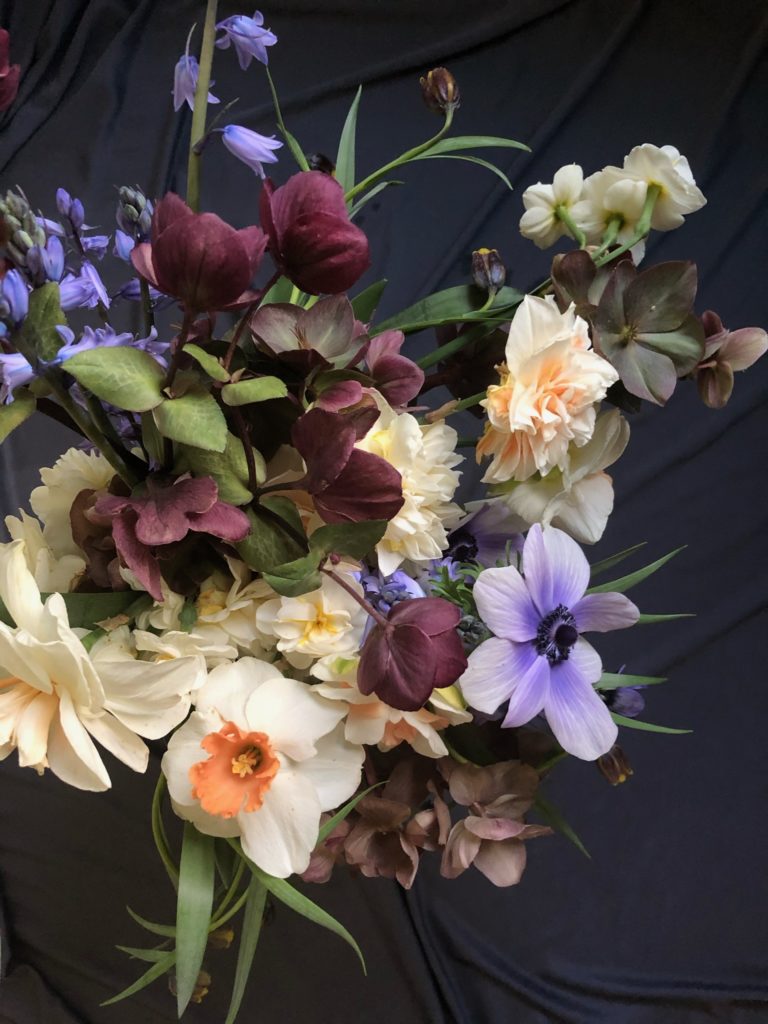
Designing with Hellebore
Since hellebore bloom in the cold, their heads bend over to protect themselves from the brisk winter weather. This wonderful characteristic is a frustrating feature from a design perspective. Hellebore’s beautiful little heads always want to face down, but we want them to see them face up and out most of the time!
To compensate, I often use hellebore as a form flower, so you can see their distinct star-shape above the other blooms. Remember my adage, “Form Flowers Float,” so float those lovelies above other flowers so they are well appreciated and seen. Try also nestling them into denser areas of the arrangement and rotating the heads upright so more of their “face” can be seen.
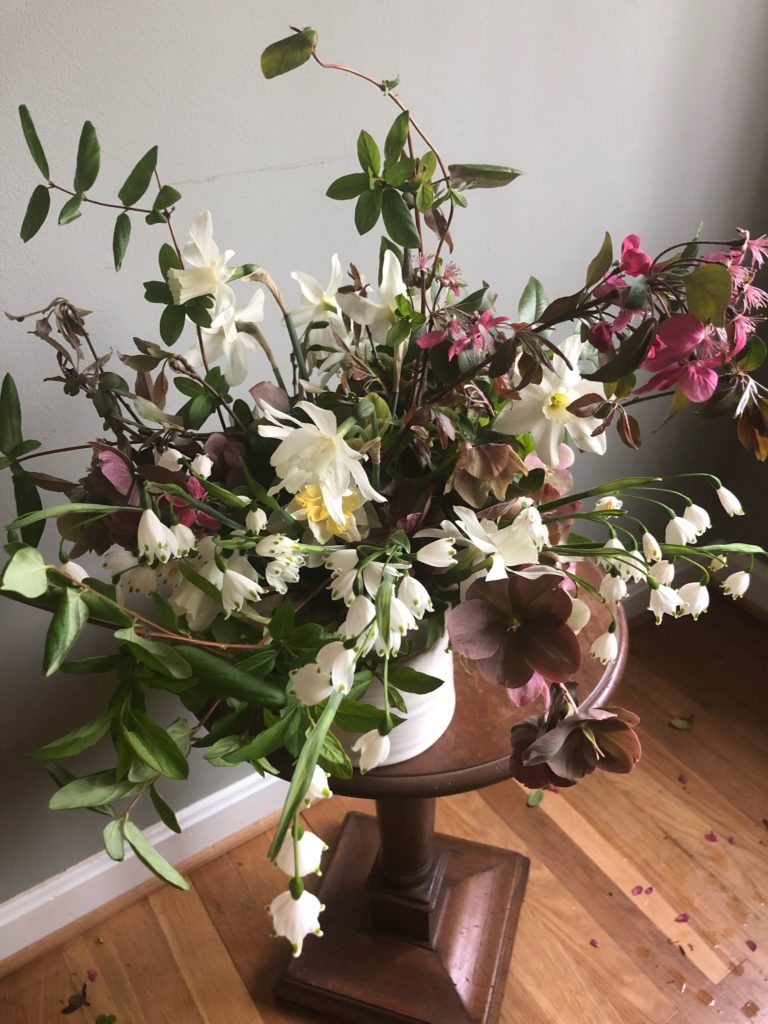
It also helps to edit your stems by removing some (or possibly all) of the foliage, as it can often compete or overtake the bloom. The foliage is evergreen and very hardy, so it can be repurposed to cover mechanics!
As far as palettes are concerned, hellebore can bring tremendous interest to an all-white palette. Alternatively, create a unique color story by following their lead. They often come in tonal shades so they work beautifully with so many colors. You can look at the bloom and pull out many ideas: golden yellows to match the yellow pollen centers pops of plum to match the flecks of deep color on a blush stem, or fresh greens to go with white-green bells.
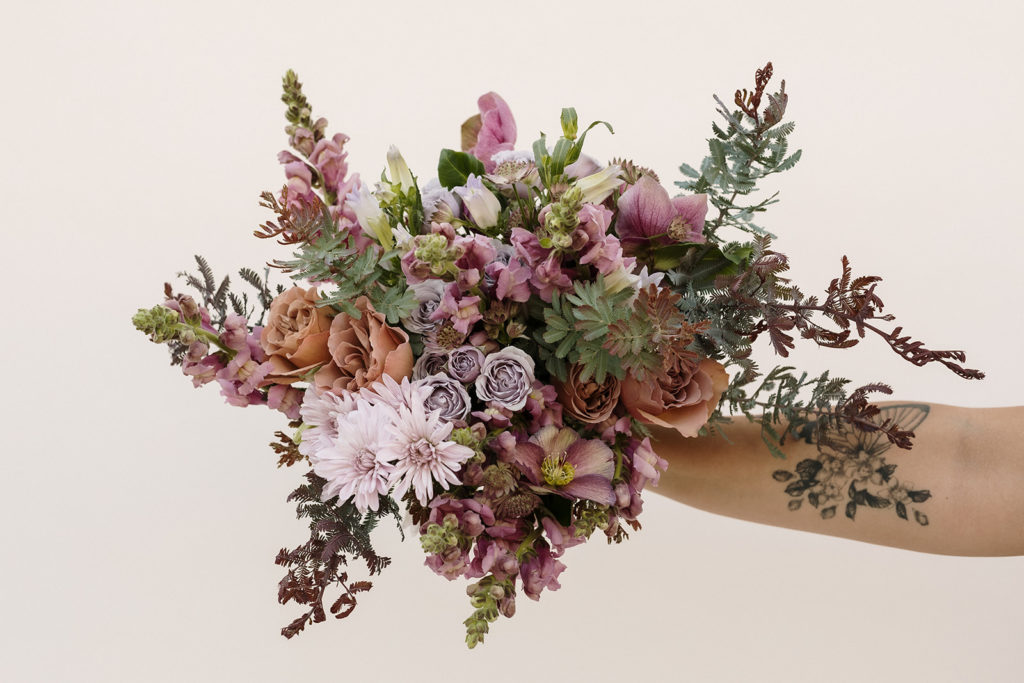
Hellebore adds gorgeous tonal color and interest to designs, so it’s worth it to practice and get the hang of using them! These beautiful blooms, when conditioned and handled properly, won’t disappoint!
I’d love to hear from you. Do you have your own hellebore horror or hero stories of your own? Let me know!
Happy designing!
Amy
Previous Post:
Next Post:
Leave a Reply
I think you'll also love reading...


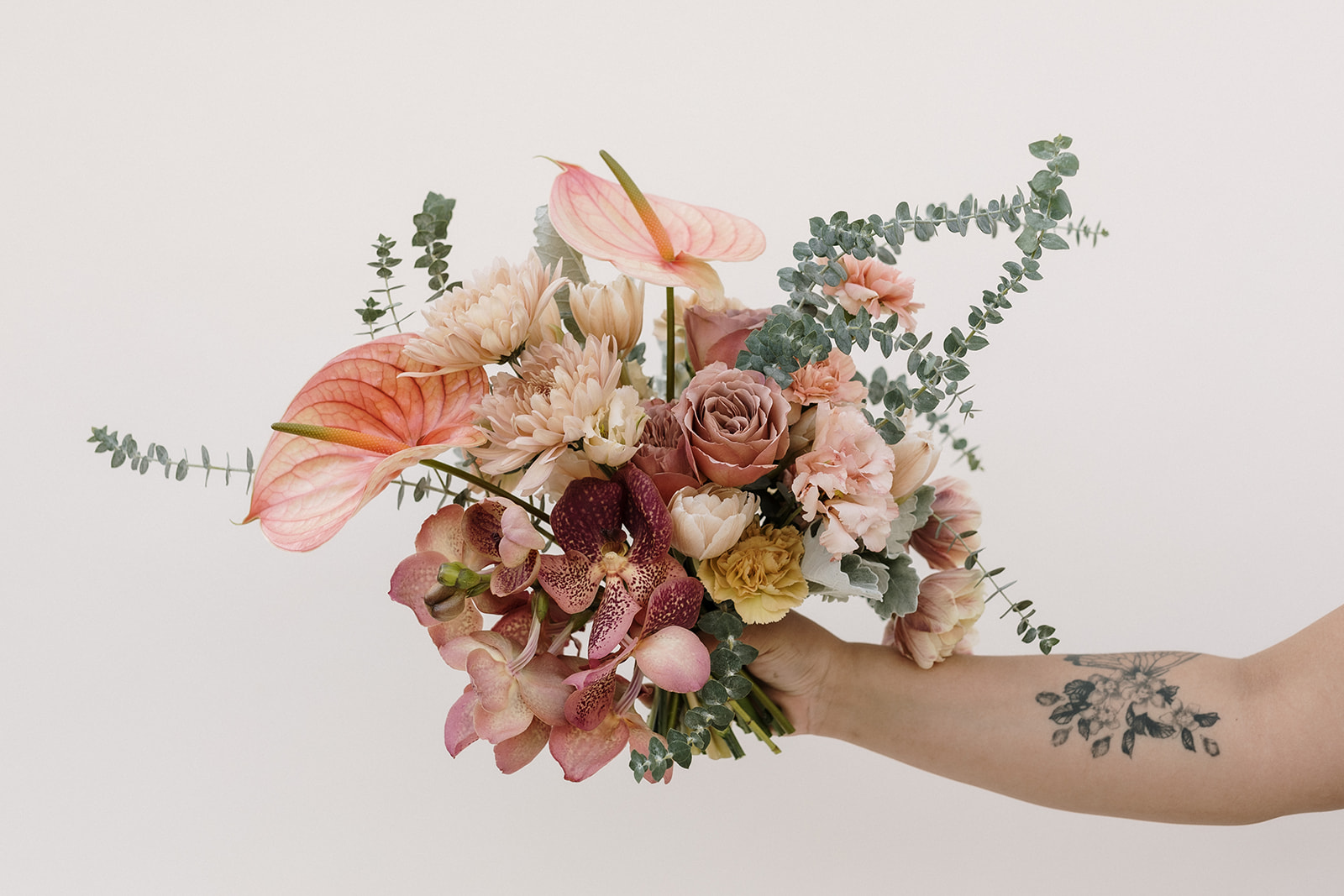


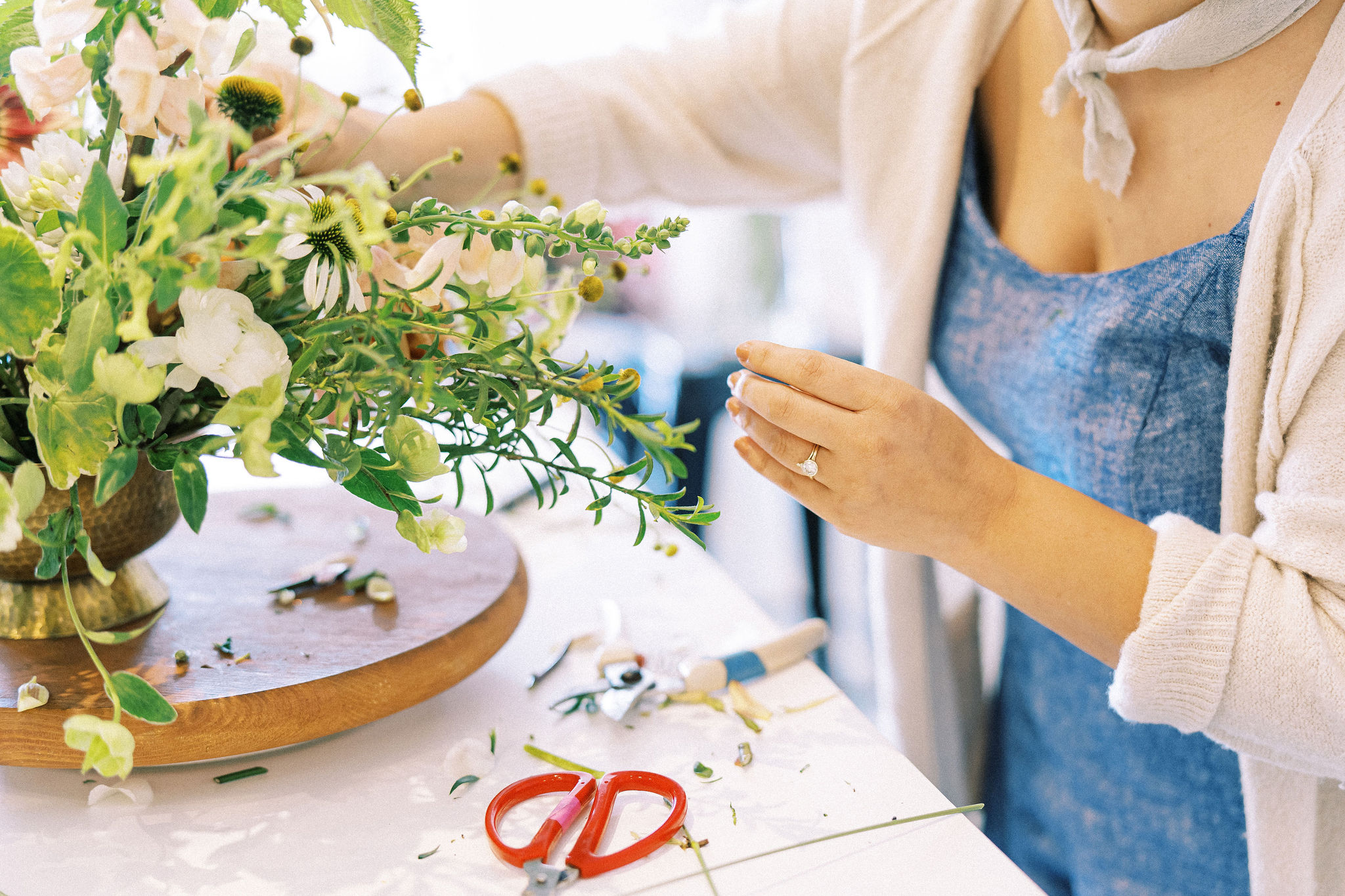



Thanks Amy! Those are such helpful tips. I knew about the pollen but not about how hydrated before cutting. I have lots in my yard since we have so much shade so I love using them whenever I can. Hope you are doing well!
Thank you for informing me of this. can’t wait to share with my garden club.
Oh good! Hellebore are really coming into season, so it’s a great time to share with them! Appreciate you following along and sharing <3
This was so helpful-thank you! Just picked up a few hellebore plants at Trader Joe’s to plant in my yard for some wearables and I’m so excited to use them!
Amazing! They make the best wearables. And having them in your yard will be the gift that keeps on giving!!
Thank you for all your tips and tricks! I’m not a florist but more of a flower enthusiast with a bit of floral experience. I trained at a local botanical garden and worked for a few years for the esteemed Winston Flowers of Boston. My experience is novice but my passion is strong.
Now that floral foam is out I am beginning to use other methods.I have never used a glass frog. Do you have any training for using that as far as best flowers and design techniques. I’m clueless on that.
Thank you again for your expertise! I love your courses!
Kind regards,
Marcia
Hey there! I love your inquiry. At this time, I don’t have any education on frogs, but make sure that you’re subscribed to our blog so if we do, you’ll be the first to know! You could also check out Ikebana textbooks. I have a few that I recommend in my Amazon store!
Appreciate you following along on the blog! And let me know if the Ikebana books work out!
Amy
Thanks, Amy! This is really great info! I completed the whole Bouquet Bootcamp last year, and it has really helped me become a better florist!
Ahhh! Amazing! I super appreciate this message! So glad the class has made a difference. Keep it up! <3
Thanks Amy! This was a fun read and OMG! The floral disasters we rescue ! I have Hellebores in my garden at this very moment. One of my great joys in life is designing from my garden. Hellebores have always confounded me -sometimes lasting forever other times -gone in a flash ! I appreciate all your suggestions & will put them to the test 🙂
Hey! Hahaha, yes, all too common. Definitely experiment with those hellebore in your garden, and let me know how these tips worked for you! Thanks for your comment and following along on the blog 🙂
Amy
Good information. Thank you Amy!
Of course! Thank you for reading!!!
Absolutely love this about Hellebore! Interesting, practical information ….. .fabulous colours and designs to see. Thank you.
Glad you enjoyed the post <3! Thanks for following along!
We have a long Lenten Rosé season in Huntsville AL and I love them. I recently saw a tip to cut the stem and then with a small sharp knife score one side of the stem, turn the stem over and score the other side. You are not splitting the stem, just scoring. But if it splits a bit, that does not seem to matter. Then put them in hot water for two hours. Usually I just put the hot water in the container that I plan to use. I have had them last in a vase of conditioned water for at least ten days
I’ve heard of this technique, but I haven’t tried it! Thanks for sharing your experience with other readers. I love hellebore too!!! – Amy
Thank you so much for the tip! I have tons of these in my garden, and I have just watched your ritual for the first time and learned so much!
I’m so glad to hear it! Thanks for following along and for your comment! – Amy